Target Demonstration Non-fatal injuries 30 Start date September 20, 1985 | Weapons Small arms Total number of deaths 20 | |
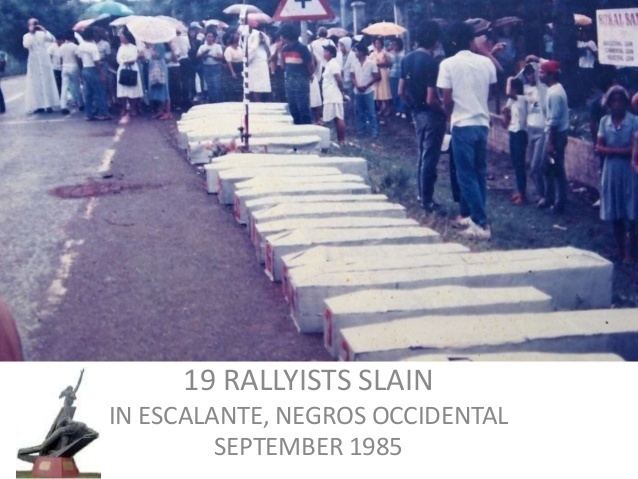 | ||
Location | ||
The Escalante massacre was an incident on September 20, 1985 in Escalante City, Negros Occidental, Philippines where para-military forces of the government gunned down civilians engaged in a protest-rally in commemoration of the 13th anniversary of the declaration of Martial Law. It is also called Escam - shorthand for "Escalante massacre", and sometimes Bloody Thursday, though the massacre really happened on a Friday.
Contents
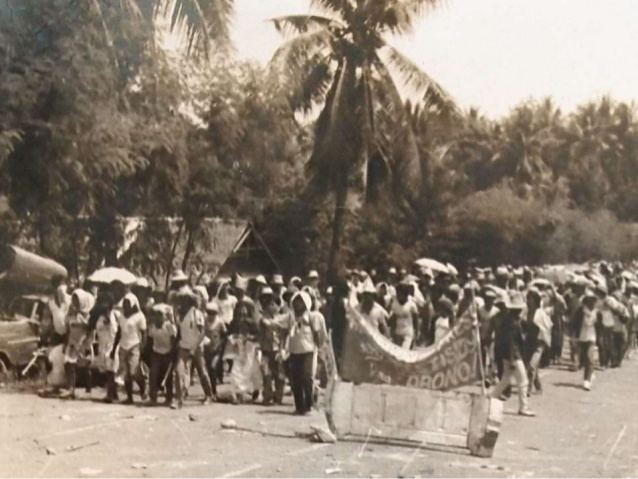
Escalante massacre
Background
The declaration of martial law on September 21, 1972 by President Ferdinand Marcos proved to be the dawning of darker days for the country. Although martial rule was lifted by Marcos on January 17, 1981, the suspension of the writ of habeas corpus was continued. Citizens merely protesting the policies of the Marcos government risked arrest without warrant and indefinite detention.
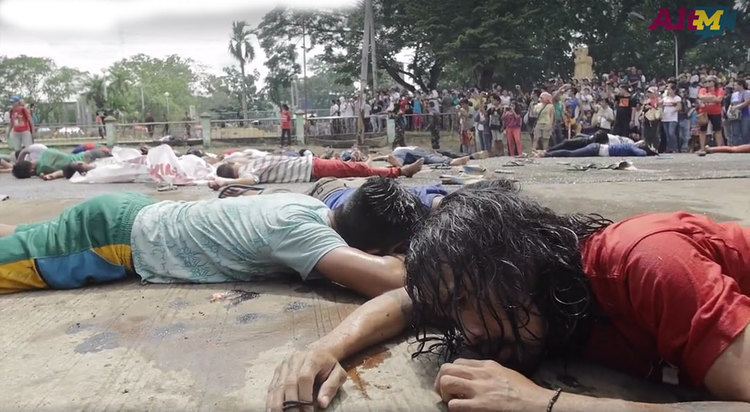
Adding to the tension of the times was the proposed creation of the province of Negros del Norte from Negros Occidental. Citizens saw this as a maneuver by Marcos cronies in the northern portion of the province to consolidate more power. Negros del Norte was created from Negros Occidental on January 3, 1986, but its creation was later found to be unconstitutional and was abolished on August 18, 1986.
Attack
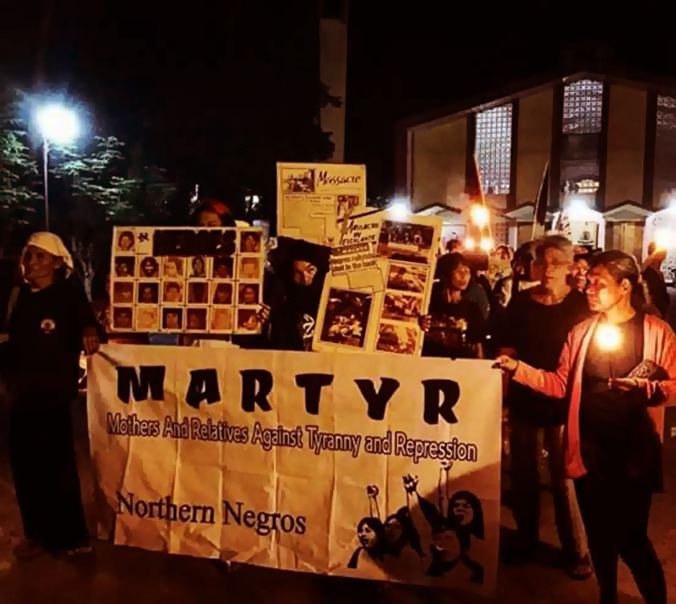
On September 18, 1985, a crowd composed of sugar workers, farmers, fisher-folk, students, urban poor, professionals and church people staged a noise protest in the town center. The crowd was estimated to number 5000. The next day, the protesters set up human barricades in front of the public market and at the entrance of the municipal plaza. On the morning of September 20, a police car approached the picket line and the protest leaders were invited to a negotiation conference at the municipal building which was about fifty meters from the barricades. The leaders refused.
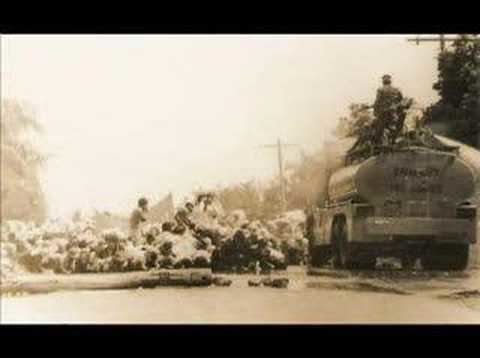
About mid-afternoon, fire trucks arrived and began to bombard the picket line with high-pressure water and tear gas. The crowd was surrounded by members of the Regional Special Action Force (RSAF) and the Civilian Home Defense Forces (CHDF). When some protestors threw back the tear gas canisters into the empty plaza, the para-military forces, who would later allege that a few "trouble-makers" tried to grab their weapons, opened fire into the masses.
Aftermath
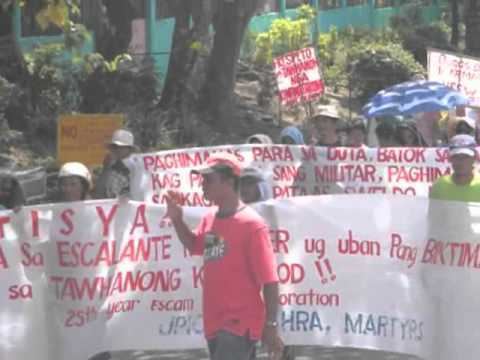
Accounts of the number of casualties vary: between twenty and thirty dead, and thirty wounded. After the crowd had dispersed, the site was cordoned off by the para-military units and on-lookers were ordered to bring the wounded to hospitals in the town. The bodies were recovered from the rally site and in the sugarcane fields surrounding the location. Buildings and concrete walls nearby were riddled with bullet holes.
The government organized the Escalante Massacre Fact-Finding Commission chaired by Ombudsman Justice Raul M. Gonzalez (as of 2007, the Secretary of the Department of Justice). The commission recommended that the government indemnify the victims' next of kin. This was never done. In 2003, three low-ranking policemen jailed for their alleged role in the massacre were released on parole.
